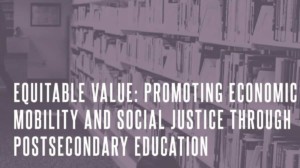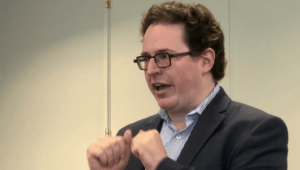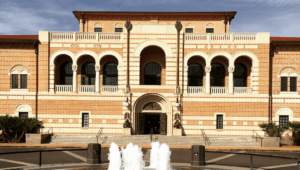3 Predictions for HigherEd in 2018

By Jeff Selingo
Welcome to 2018. This January, like every other, we’ve been provided with plenty of predictions for the year ahead in higher ed. Here are three more for you to consider.
1) New pricing models will emerge as schools continue to miss enrollment and revenue goals.
 A new survey out this week from the Chronicle of Higher Education, Council of Independent Colleges, and the American Association of State Colleges and Universities, found that 55% of private colleges and 52% of public colleges fell short of their net-tuition revenue (what’s left after institutional financial aid is distributed).
A new survey out this week from the Chronicle of Higher Education, Council of Independent Colleges, and the American Association of State Colleges and Universities, found that 55% of private colleges and 52% of public colleges fell short of their net-tuition revenue (what’s left after institutional financial aid is distributed).
The same survey found that 44% of public colleges and 52% of private colleges didn’t meet their enrollment goals.
When I began covering higher ed in the mid-1990s, Moody’s Investors Services warned colleges not to exceed a 25% discount rate. Now, the average tuition discount rate is 44%. Even among the financially stable schools rated by Moody’s, the average discount is in the high 30s.
The system is reaching a breaking point as net revenue softens. Colleges need to increase revenue to invest in new programs, keep faculty, and maintain facilities. A few years ago, campuses developed new four-year tuition guarantees or tuition resets. The opportunity is ripe again for new approaches to pricing.
2) Graduate enrollment will decline sharply as student debt rises.

- Grad students, including those pursuing professional degrees, account for 38% of federal education loans but just 17% of students. Those pursuing advanced degrees borrow, on average, 3X as much as the typical undergraduate—$18,210, compared with $5,460.
- Republicans in the House of Representatives have proposed capping the amount of money graduate students could borrow at $28,500 annually, instead of allowing them to borrow whatever schools charge.
- If such changes are approved, they are likely to severely depress the market for graduate school, where enrollments are already flat or declining after decades of growth.
- This provides a chance for universities to rethink their graduate offerings and provide more short-term programs—weeks instead of months—that lead to new types of credentials, such as micromasters and badges.
3) As the demographics of high-school grads shift, so too will the historical migration patterns of students to colleges.
- Even as more institutions expand their search areas for admissions, many indications suggest the market for students willing to get on a plane or drive several hours to college is not growing at the same rate.
- Too many colleges have become reliant on California as an exporter of students. Not only is the number of high-school graduates expected to decline in the Golden State, but the trends indicate fewer of them will be willing to travel, especially to states without a racially diverse population.
- Higher-education leaders have generally assumed that the college-going rate in the United States would continue to inch up. Given changing demographic patterns, there’s a strong possibility that number might actually decline in the coming years.
Three Things to Ponder
Making the bachelor’s degree more valuable. “Having a B.A. less about obtaining access to high-paying managerial and technology jobs and more about beating out less-educated workers for the barista and clerical job.” It’s a line from an economics study I won’t soon forget. But how can colleges make the bachelor’s degree more valuable. See how four institutions have realigned their curricula and career services to better prepare students for what’s next in this free white paper.
Explaining financial aid. With a niece and nephew applying to college this year, I’ve been busy trying to explain the intricacies of admissions. But trying to explain financial aid in an era of rapid discounting is nearly impossible. So instead I just send this great Ron Lieber piece from the New York Times.
Understanding financial aid. For students and their parents, deciphering the financial-aid letters from most schools is also impossible. uAspire, a nonprofit that promotes college access, teamed up with the think tank New America to analyze some 11,000 financial aid letters from more than 900 colleges. See what they found in my latest column for the Washington Post.
For more, see:
- 10 Current and Emerging Trends in Adult Learning
- The Role of Advisory in Personalizing the Secondary Experience
- 10 Strategies for Strengthening Academic and Social Support
Jeff Selingo has written about higher education for two decades. He is the author of three books, the newest of which, There Is Life After College, is a New York Times bestseller. Connect with him on Twitter: @jselingo
Stay in-the-know with all things EdTech and innovations in learning by signing up to receive the weekly Smart Update.





0 Comments
Leave a Comment
Your email address will not be published. All fields are required.